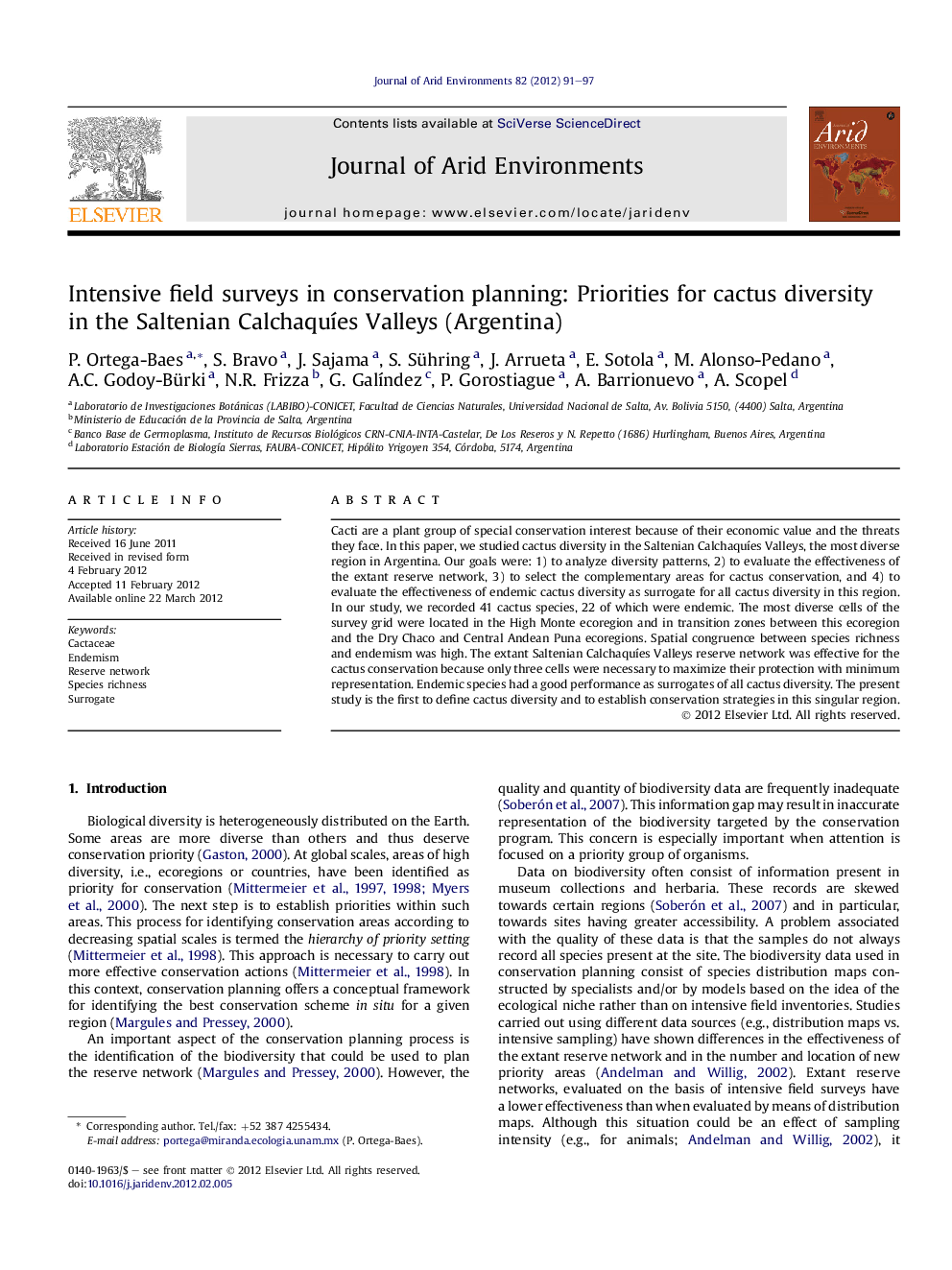| Article ID | Journal | Published Year | Pages | File Type |
|---|---|---|---|---|
| 4393375 | Journal of Arid Environments | 2012 | 7 Pages |
Cacti are a plant group of special conservation interest because of their economic value and the threats they face. In this paper, we studied cactus diversity in the Saltenian Calchaquíes Valleys, the most diverse region in Argentina. Our goals were: 1) to analyze diversity patterns, 2) to evaluate the effectiveness of the extant reserve network, 3) to select the complementary areas for cactus conservation, and 4) to evaluate the effectiveness of endemic cactus diversity as surrogate for all cactus diversity in this region. In our study, we recorded 41 cactus species, 22 of which were endemic. The most diverse cells of the survey grid were located in the High Monte ecoregion and in transition zones between this ecoregion and the Dry Chaco and Central Andean Puna ecoregions. Spatial congruence between species richness and endemism was high. The extant Saltenian Calchaquíes Valleys reserve network was effective for the cactus conservation because only three cells were necessary to maximize their protection with minimum representation. Endemic species had a good performance as surrogates of all cactus diversity. The present study is the first to define cactus diversity and to establish conservation strategies in this singular region.
► Forty one cactus species, 22 endemic, were recorded in the study area. ► We registered a high congruence between species richness and endemism hotspots. ► We registered a significant species richness–endemism relationship. ► The regional extant reserve network was effective for the cactus conservation. ► Endemic species were good surrogates for all cactus species.
